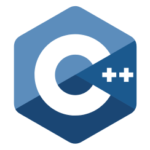Some C++ data types, their format specifiers, and their most common bit widths are as follows:
Int (“%d”): 32 Bit integer
Long (“%ld”): 64 bit integer
Char (“%c”): Character type
Float (“%f”): 32 bit real value
Double (“%lf”): 64 bit real value
Reading
To read a data type, use the following syntax:
scanf(“format_specifier“, &val)
For example, to read a character followed by a double:
char ch;
double d;
scanf(“%c %lf”, &ch, &d);
For the moment, we can ignore the spacing between format specifiers.
Printing
To print a data type, use the following syntax:
printf(“format_specifier“, val)
For example, to print a character followed by a double:
char ch = ‘d’;
double d = 234.432;
printf(“%c %lf”, ch, d);
Note: You can also use cin and cout instead of scanf and printf; however, if you are taking a million numbers as input and printing a million lines, it is faster to use scanf and printf.
Input Format
Input consists of the following space-separated values: int, long, char, float, and double, respectively.
Output Format
Print each element on a new line in the same order it was received as input. Note that the floating point value should be correct up to 3 decimal places and the double to 9 decimal places.
Sample Input
3 12345678912345 a 334.23 14049.30493
Sample Output
3
12345678912345
a
334.230
14049.304930000
Explanation
Print int 3,
followed by long 12345678912345,
followed by char a,
followed by float 334.230,
followed by double 14049.304930000.
SOLUTION :
#include <cstdio>
using namespace std;
int main() {
int i;
long l;
char c;
float f;
double d;
scanf("%d %ld %c %f %lf" , &i, &l, &c, &f, &d);
printf("%d\n%ld\n%c\n%.3f\n%.9lf\n", i,l,c,f,d);
return 0;
}FOLLOW FOR MORE QUESTIONS AND SOLUTIONS | DIGIT WOOD



Leave a Reply